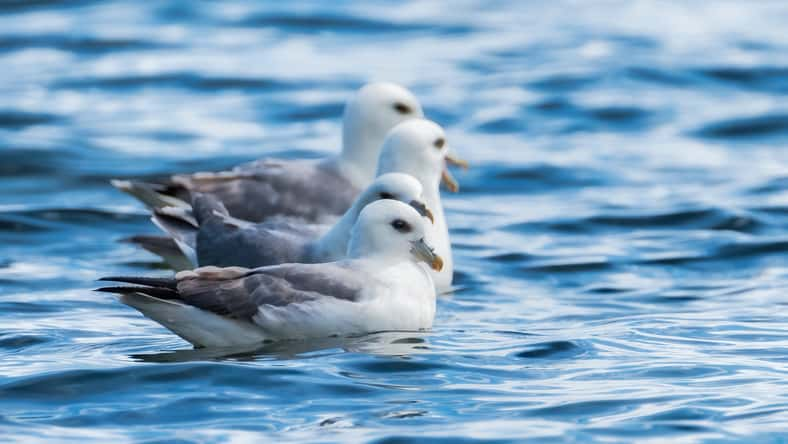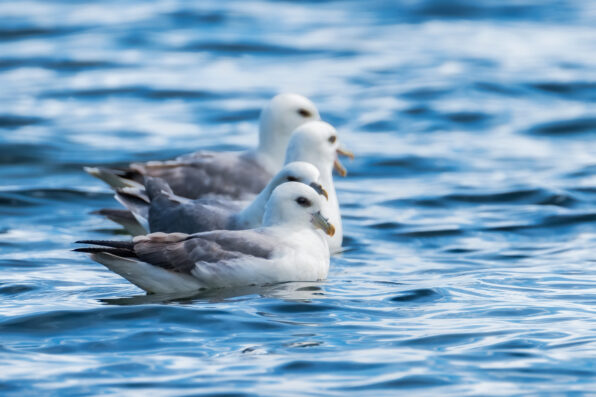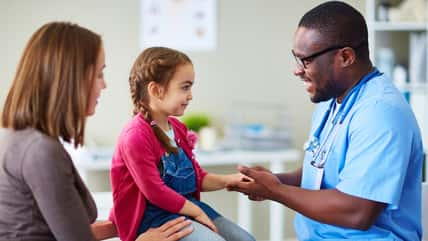New Research Finds That Microplastics Are Impacting The Microbiomes Of Seabirds

Did you know that, on average, some people ingest five grams of plastic every week? Five whole grams is the equivalent of a credit card.
That’s because everywhere, there are minuscule pieces of plastic. These tiny bits have been found in the food we eat, the water we drink, and the air we inhale. Microplastics have also been discovered in humans’ blood, feces, and placenta.
While we know that tiny pieces of plastic are all around and in us, though, the impact of microplastics on humans and other animals has not been completely understood.
However, new research published in Nature Ecology & Evolution has found that microplastics may impact the gut microbiome of seabirds– or the trillions of microbes in the intestines that play a critical role in the health of both humans and animals.
Microplastics are tiny pieces of plastic measuring under five millimeters in diameter. And unfortunately, this kind of pollution has plagued countless parts of the world– including even remote regions such as the Arctic and the Tibetan Plateau.
Scientists are unsure just how much plastic the majority of animals are exposed to. However, sea birds are particularly vulnerable since the birds spend much of their life eating fish located at the water’s surface. This leads to the ingestion of floating plastic.
Past studies have already found that these floating microplastics are extremely damaging for seabirds, too. After animals ingest microplastic, their stomachs often feel full– causing them to not eat enough and ultimately starve to death.
In addition to that, the chemicals from the plastic pieces are also harmful, resulting in symptoms such as inflammation.
It was this finding that inspired Gloria Fackelmann, a microbial biologist from Ulm University in Germany, to wonder whether the microbes that stick to plastic surfaces might also impact animals’ microbiomes after ingestion.

HighlandBrochs.com – stock.adobe.com – illustrative purposes only, not the actual birds
Just a handful of studies have specifically analyzed the impact that plastics have on the microbiome. And most of these research efforts have been experimental mouse models.
That’s why for this study, the team hoped to look at real-life examples.
Fackelmann and her colleagues decided to examine seabirds from Portugal and Canada. They collected 27 northern fulmars, as well as 58 Cory’s shearwaters. The latter group had died following collisions with buildings.
Afterward, the team took samples from two ends of each animal’s intestinal tract. First, the proventriculus, and then, the cloaca. The goal was to determine what the microbiome looked like at each end.
Additionally, the researchers flushed out each bird’s gastrointestinal tract in order to count the individual pieces of plastic ingested. They also weighed the total amount found in the gut of every animal.
It was discovered that the birds with more microplastic pieces in their guts also had more microbiome diversity.
While a range of gut microbe varieties has typically been thought of as a good thing, though, that is not always true– especially if the introduced bacteria are harmful.
So, the team analyzed the microbiomes to figure out if the introduced microbes were considered “good” or “bad.” To do this, they looked up each individual microbe type to narrow down exactly what each one does.
This analysis revealed that birds with more plastic in their guts also had more microbes known to break down plastic.
On top of that, there were more microbes known to be antibiotic resistant and more with disease-causing potential.
Now, Fackelmann and her team did not assess the overall health of the seabirds– meaning they were unsure whether or not the microbes were making the animals sick.
“But if you accumulate pathogens and antibiotic-resistant microbes in your digestive system, that’s clearly not great,” said Martin Wager, a biologist who did not partake in the study.
So, the study ultimately revealed that the current levels of plastic already present throughout our environment are significant enough to have an impact on animals’ microbiomes.
And moving forward, the researchers’ next step is to figure out how this could impact the health of animals, as well as the health of humans.
To read the study’s complete findings, visit the link here.
If true crime defines your free time, this is for you: join Chip Chick’s True Crime Tribe
Sign up for Chip Chick’s newsletter and get stories like this delivered to your inbox.
More About:Science





